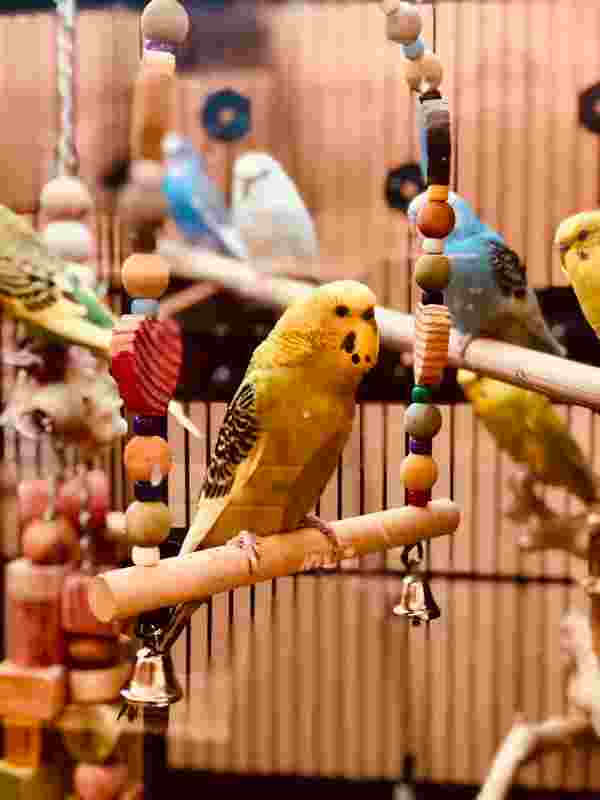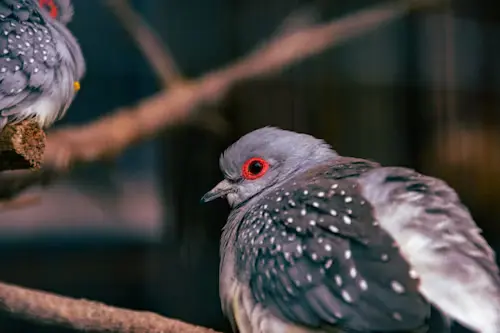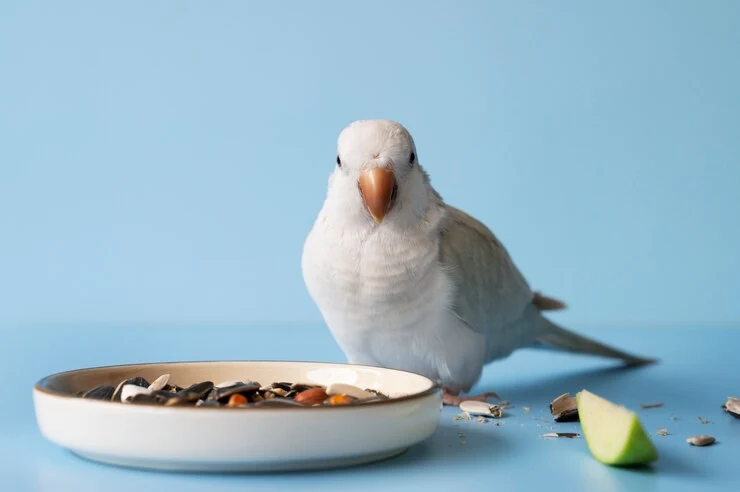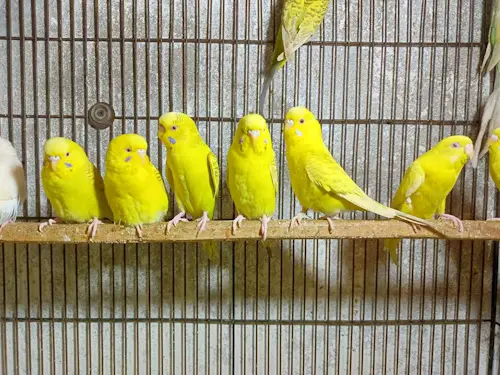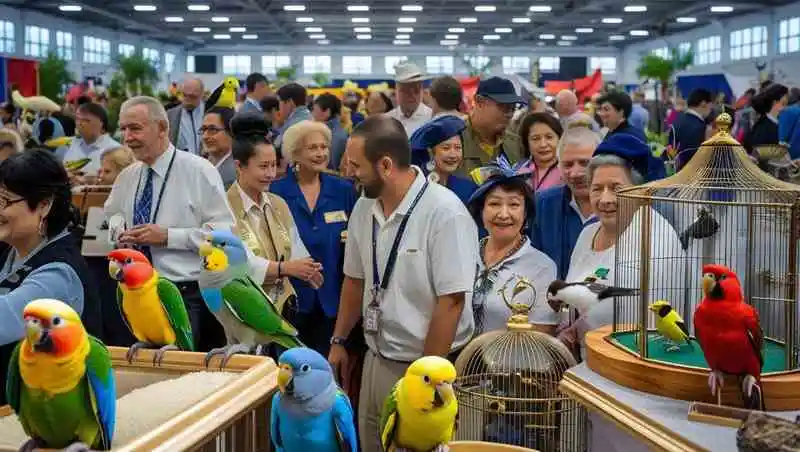Ringneck Parrot Secrets: Best Ways to Care and Connect
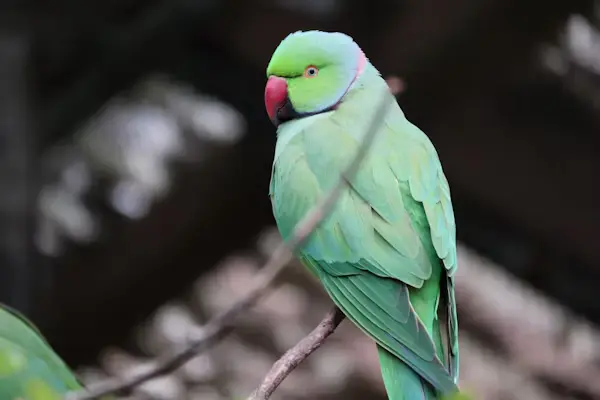
The first time I heard an Indian Ringneck Parrot mimic laughter was magical—a perfect, bell-like sound that transformed skepticism into wonder. As the vibrant green bird cocked its head and stared with intelligent black eyes, I knew this creature was more than just colorful feathers. But here’s the truth many whisper yet few admit upfront: Ringnecks aren’t cuddly impulse buys. They demand respect, patience, and understanding. And if you try to force affection? Those brilliant beaks draw blood. If you seek a deep bond with a dazzling, complex companion, however, this journey ranks among avian ownership’s most rewarding challenges.
Table of Contents
Are Ringneck Parrots Right for You? Pros, Cons & Crucial Considerations
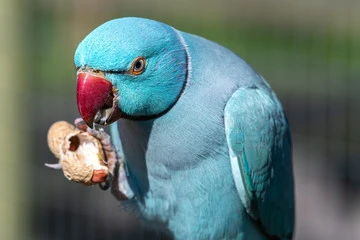
Before falling for that graceful stance and jaunty ring, be honest: Are you equipped for parrot parenthood? Commonly dubbed the Ringneck Parrot in aviculture, Psittacula krameri ranks among nature’s cleverest, longest-lived parakeets. But their intelligence comes bundled with quirks.
Key advantages:
- Mesmerizing vocal prowess: Masters of speech and sound effects, some learn 250+ words precisely.
- Captivating beauty: Wild types flaunt emerald green feathers against lemon-yellow collars (males), while mutations range from turquoise to albino.
- Playful independence: Perfect if you appreciate interactive birds not glued to your shoulder 24/7.
Hard realities:
- Bluffing phases: Juvenile Ringnecks (4-12 months) often undergo hormonal “bluffing”—suddenly biting defensively despite hand-rearing.
- Demanding socialization: Without daily mental engagement, they scream or pluck feathers relentlessly. They hate chaotic households.
- 30+ year commitment: Your pet will likely outlive most dogs.
Ringneck vs. Quaker Parrots: Personality Faceoff
| Trait | Indian Ringneck Parrot | Quaker Parrot |
|---|---|---|
| Talking Ability | Exceptional clarity, large vocabulary | Quick mimic, robotic tone |
| Mood Stability | Prone to hormonal shifts | Generally even-tempered |
| Social Needs | Independent, intolerant of rough handling | Cuddly, family-oriented |
| Beginner Fit | Challenging (training essential) | More forgiving |
Quakers bond intensely with humans; Ringnecks interact alongside you. Both live decades, but Ringnecks often bluff more dramatically during adolescence. Choose carefully.
Inside Your Ringneck’s World: Biology, Behavior & Natural Habits
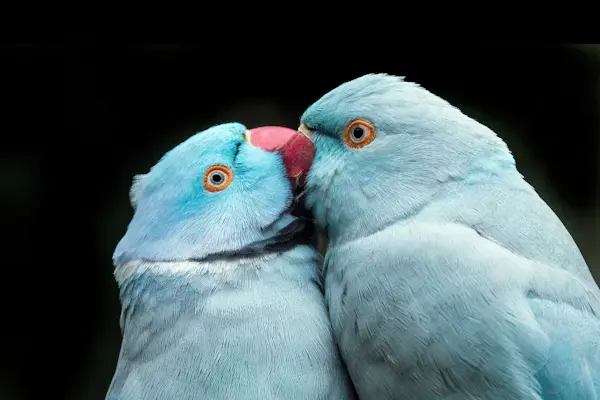
Ringnecks inhabit diverse ecosystems across Asia and Africa, thriving in woodlands and urban gardens. Their scientific label “rose-ringed parakeet” nods to males’ vivid neck rings. Understanding their biology clarifies behavior:
- Size: Medium (16 inches long including elongated tails)
- Maturation: Males display black/rose collars between 18–36 months
- Life expectancy: 25–32 years with proper care
- Mutational variety: See the mesmerizing spectrum in our colorful parrot guide.
Behaviors decoded:
- Frequent growling or grunting: Normal communication—not hostility.
- Loyal but picky: Imprinted birds favor one person but accept others with training.
- Chew killers: Wood toys prevent destructive obsession with furniture or cords.
Crafting A Ringneck Paradise: Cage Setup, Diet, & Health Optimization

With long-term health tied to care, never skimp on these essentials:
✅ Ideal Housing:
- Cage dimensions: Minimum 24″W x 36″D x 48″H—their wings demand space!
- Strategic placement: Elevated perches amidst family activity zones but avoid kitchens or drafty windows.
- Essentials inside: Natural wood (manna, dragonwood) perches, food/water crocks, swing boxes + foraging shredders like balsa blocks.
✅ Nutritional Excellence:
| Food Type | Portion (%) | Examples | Avoid |
|---|---|---|---|
| Pellets | 60% | Harrison’s Organic, TOP’s | Dyes/sugary mixes |
| Vegetables | 25% | Broccoli, bell pepper | Avocado, garlic |
| Fruit/Nuts | 10% | Papaya, walnuts | Chocolate, salt snacks |
| Seeds | 5% (treats) | Safflower, hemp | Sunflower (fat-heavy) |
Obesity plagues captive Ringnecks—never free-feed seeds. A formulaic pellet foundation prevents vitamin shortages. See our green parrot care guide.
✅ Exercise is not optional: Minimum 3-4 hours daily flight or climbing time prevents biting urges or depression. Puzzle toys like spinning ladders extend engagement.
✅ Preventive Healthcare:
- Annual avian vet checks
- Nighttime sleep: 12-14 hours uninterrupted
- Misting lanes skin/feather hydration sources provoke feather loving preening cycles
Symptoms requiring emergency vet attention:
- Crusty nares
- Refusal to eat for >6 hours
- Tail bob continuously alternating up and down
Mastering Ringneck Communication: Training Tips & Speech Solutions
Hoping for a poetic parrot? Ringneck Parrot talking abilities compare favorably to larger macaws—if handled properly.
Speech milestones:
- Mimicking starts earliest at 8 months (commonly 1-2 years)
- Females speak less often, though bright individuals exceed biases
- Sentences require persistence—short phrases taught consistently win best
Training methodology:
- Sit near their cage daily speaking target phrases enthusiastically
- Use grazing rhythm patterns like “good bird!” to captivate focus delivery consonant sounds again afterward even outside unconfined scheduled session periods
Correcting biting immediately after this period starts:
- Anticipate triggers (screaming toddlers, roaring appliances)
- Say firm phrases like “gentle!”
- Withdraw attention for 60 seconds post-bite
Adopting Your Feathered Philosopher: Ethical Sources & Pricing
Ethical acquisition ensures happier adult adjustment:
Rescue Focus:
- Numerous shelters rehome surrendered parrots
- Behavioral issues typically resolve after weeks replacing trauma through patient bonding
Breeder Selection:
- Avoid pet stores—no history transparency/health guarantees
- Meet the parent happy birds habits personally prior purchasing engagements
- Average cost: $400–$1200 depending on coloration rarity lineage papers
Key adoption queries:
- Was chick socialization done accordance with responsible early hand-feeder protocol?
- Exactly what diet treatment followed?
- Okay if visitor examining previous vaccination certificates accordingly?
Ringneck Parrot FAQs
How do I STOP persistent biting?
Redirect attention using oak wood chews interruptively when signaling agitation instead; perhaps temporarily avert towards eye-contact alternatives like dangling rope foraging treats around distraction objects until flux passes thus de-escalate tension thereafter successfully.
Can Ringnecks actually learn talking IF older than two years?
Certainly! While chicks absorb language faster cognitively fruitfully accomplishing courses forming syllables neurologically differently developmentally structured, adult Ringnecks cultivate diction dependably with 30-minute daily interaction concentrated efforts teaching conscious vocabulary affirmation repetitions demonstrated scientifically.
What enrichment genuinely paste interests Ringnecks?
Complex puzzles unsolvable intuitively identifiably simple—specifically combinations incorporating unlocking semi-hidden compartments revealing star anise hidden underneath unlikely materials manipulating accessible only through persistent moderately advanced creativity-centric solving objectives proven appropriately stimulating kindred spirits akin habitual flock problem-solving survival tactics.
Raising a Ringneck Parrot resembles mastering an intricate dance—one where missteps yield bites, but harmonious steps unlock unparalleled companionship. Their articulate voices and breathtaking plumage demand patience; reciprocating earns decades of loyalty. Heed their body language, nourish their brilliance, and glory in discovering a mind behind those jewel-like eyes.
Have questions about your own Ringneck’s quirky behavior or training achievements? Share stories or seek personalized advice in the comments below!

